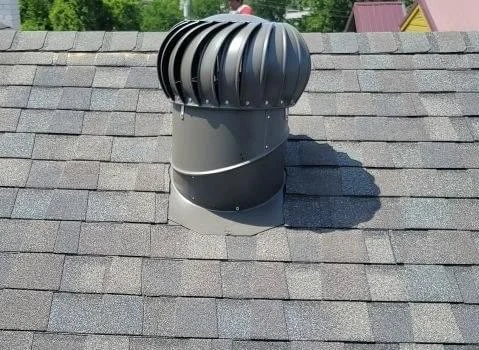When most homeowners think about their roof, they focus on shingles, flashing, or gutters. However, there’s one critical component that is often overlooked—roof ventilation.
Proper ventilation plays a huge role in your home’s comfort, energy efficiency, and even the longevity of your roof. In a city like New York, where homes face everything from humid summers to freezing winters, roof ventilation isn’t just a nice-to-have—it’s a necessity.
In this article, we’ll explore why roof ventilation matters, the problems caused by poor airflow,
What Is Roof Ventilation?
Roof ventilation is a system of intake and exhaust vents that allow air to flow through your attic or roof space. It regulates temperature and moisture levels, ensuring your home stays comfortable and your roof stays protected.
The two main types of ventilation are:
- Passive ventilation: Uses natural airflow (like ridge vents, soffit vents, and gable vents) to keep air moving.
- Active ventilation utilizes fans or powered vents to enhance airflow, which is often necessary in larger homes or complex roof structures.
A properly designed system ensures a steady flow of fresh air in and stale, humid air out—no matter the season.
Why Is Roof Ventilation So Important in New York Homes?
New York’s diverse weather makes ventilation essential for several reasons:
Protects Against Moisture Damage
Moisture is one of a roof’s biggest enemies. Poor ventilation traps warm, humid air in your attic, leading to:
- Mold and mildew growth
- Rotting of wooden roof supports
- Deterioration of insulation
In humid New York summers, this trapped moisture can escalate rapidly, posing a threat to both your roof’s structure and indoor air quality.
Improves Energy Efficiency
During hot summer months, poor ventilation allows heat to build up in your attic—raising indoor temperatures and forcing your AC to work overtime.
Proper ventilation reduces attic heat, easing the burden on your cooling system and lowering energy bills.
In winter, it prevents warm, moist indoor air from condensing in your attic, helping you maintain a stable indoor temperature without energy loss.
Prevents Ice Dams in Winter
New York winters bring snow, ice, and freezing temperatures. Without proper ventilation, heat from inside your home can rise to the roof, melting snow that refreezes at the eaves—creating dangerous ice dams.
Ice dams trap water on your roof, leading to leaks, damaged shingles, and costly repairs. Ventilation keeps your attic cool, preventing this cycle from occurring.
Extends the Life of Your Roof
Trapped heat and moisture can warp shingles, corrode flashing, and compromise the integrity of your roof deck. Over time, this reduces the lifespan of your roofing system.
With proper ventilation, your roof can last longer, saving you thousands in premature replacements.
Signs of Poor Roof Ventilation
Are you unsure if your roof is properly ventilated? Watch for these warning signs:
- Hot, stuffy attic in summer
- Condensation or frost on attic walls or rafters in winter
- Mold or mildew growth in the attic
- Peeling paint or warped wood on the roof deck
- Unusually high energy bills year-round
- Frequent roof repairs or premature shingle damage
If you notice any of these issues, it’s time for a professional inspection.
How Roof Ventilation Works: Intake & Exhaust
An effective ventilation system needs both intake and exhaust vents:
- Intake vents (usually located at the soffits) bring fresh air into the attic.
- Exhaust vents (like ridge or gable vents) let hot, humid air escape.
When these work together, they create a natural airflow cycle that keeps your roof space balanced—dry, cool, and damage-free.
FAQs About Roof Ventilation
1. How do I know if my roof is adequately ventilated?
The best way is to schedule a professional inspection. RH Renovation LLC can assess your system and recommend improvements to enhance its performance.
2. Can I add ventilation to an existing roof?
Yes! We can retrofit intake and exhaust vents or install attic fans to improve airflow.
3. Does roof ventilation lower energy bills?
Absolutely. Proper airflow prevents heat buildup in summer and moisture problems in winter, keeping your HVAC system from overworking.
4. How often should ventilation be checked?
We recommend a yearly inspection, especially after severe storms or extreme weather.
Protect Your Home with Proper Ventilation
Your roof is one of your home’s most significant investments. Don’t let poor ventilation shorten its lifespan or cost you thousands in roof repairs.
RH Renovation LLC is here to help you protect your property with expert roofing installation and repair services in New York.



